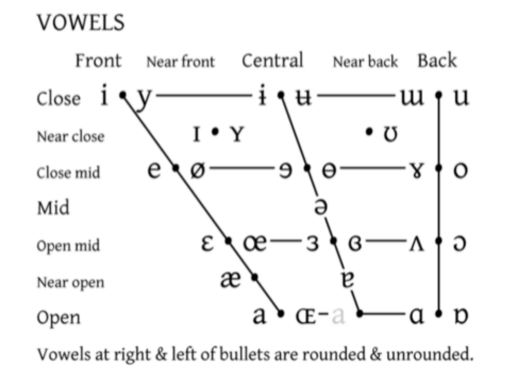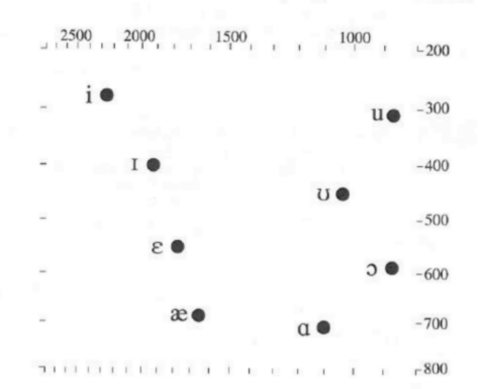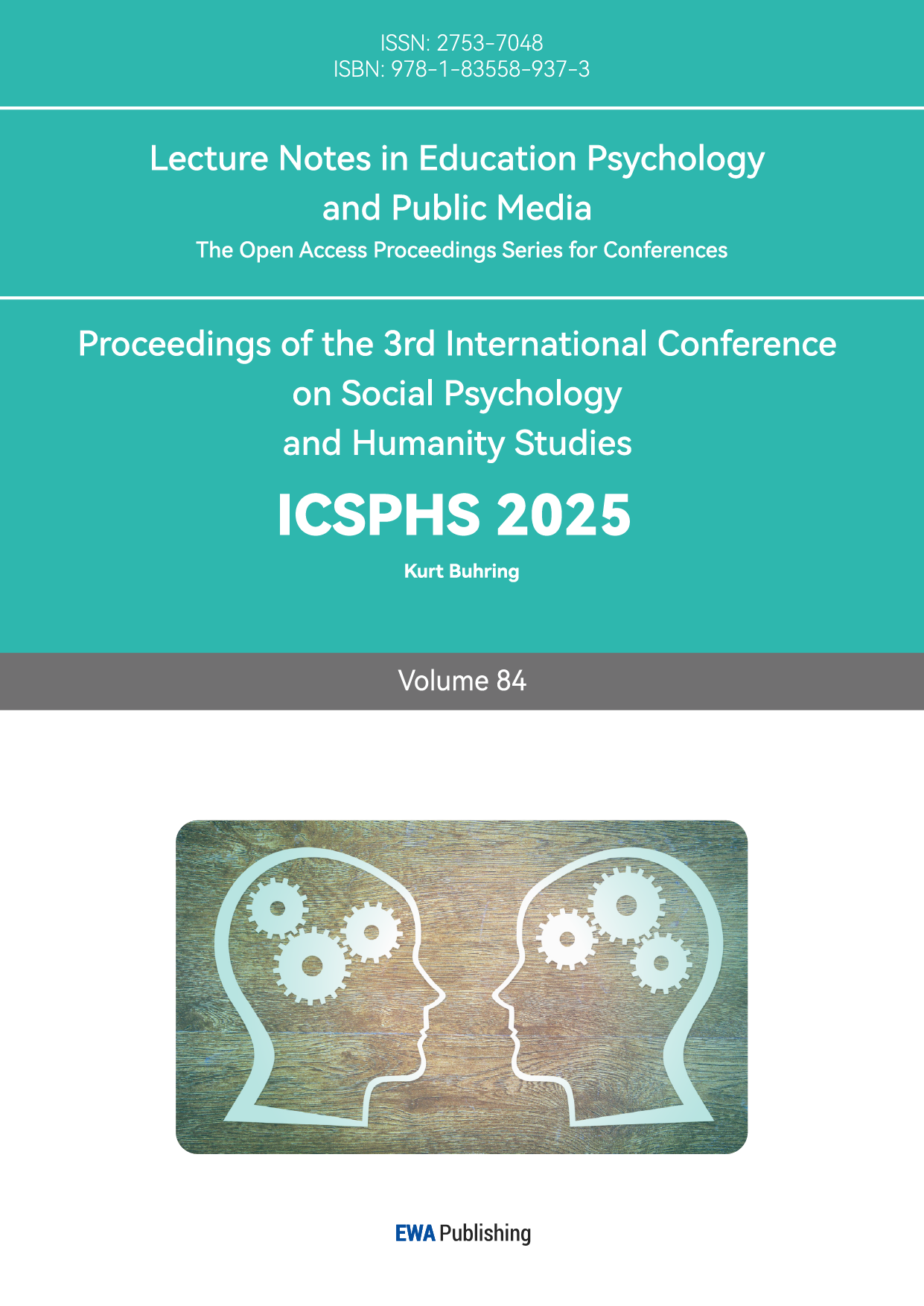1. Introduction
With the deepening of globalization, being able to express oneself fluently in English as a global language is crucial. Chinese and English are two completely different languages, each possess unique phonetic systems. When learning English, students are influenced by their mother tongue, a phenomenon referred to as mother tongue interference. Language interference can be divided into ‘positive interference’ and ‘negative interference’. When the linguistic rules of the mother tongue and the target language are inconsistent, ‘negative interference’ occurs [1].
The Hunan dialect, known for its diversity, encompasses four primary categories: Xiang dialect, Southwestern Mandarin, Gan dialect and Hakka dialect, and Xiangnan vernacular [2]. Research such as ‘Three-dimensional Comparative Study of the Xiang Dialect and the National Common Language,’ indicates that compared to Mandarin, some Hunan dialects still preserve relatively systematic voiced stops, voiced stop fricatives, and voiced fricatives [3]. Therefore, as a highly influential dialect, the Hunan accent can, to a large extent, cause obstacles for students when acquiring English phonetics.
This article investigates two aspects:
1. The negative transfer effect of Hunan accent on English vowel pronunciation;
2. Teaching strategies to address these challenges. Through case analysis, comparative analysis and literature research, this study will help provide a theoretical basis for correcting local students' English pronunciation in teaching.
2. Research methods
This study uses a combination of qualitative and quantitative research methods. The phenomenon of ‘negative transfer’ of English vowels will be concluded through experiments and literature research. In this experiment, a total of 12 volunteers participated in the audio recording, comprising 9 females and 3 males. All participants were Chinese native speakers, born or raised in Hunan Province or have a family language environment with a Hunan accent. They are all third-year undergraduate students majoring in English. The average age they started learning English is 8 years old, their English level is about C1 level, and they have received relevant training in English phonetics courses. All participants had an English accent of about C level (i.e., with a slight accent)[4].
The corpus used in the experiment was selected from the Oxford Dictionary. In order to ensure the correctness of the experimental results, a control group was set up. The control group extracted the audio of relevant words from the Oxford Dictionary, representing General American English Pronunciation (GenAm). All participants were required to read out these words in order. After the recordings were obtained, the files were imported into the Praat software for analysis, and compared with the control group for a final conclusion. The recording equipment used in this experiment was the DJI mic2, which used the internal recording function in mono, with a sampling rate of 48kHz and an audio format of WAV. All participants recorded in a quiet environment to eliminate the interference of other external factors.
3. Negative transfer of English vowel pronunciation
3.1. Participants and experimental procedure
The experiment analyzed audio recordings from ten participants after excluding two. The audio files of the two participants were excluded for the following reasons: one participant's home language environment was a multi-accent environment, and the other had more than one mispronunciation of words. All participants’ native language is Chinese and the target language is English. The control group's pronunciation is from the Oxford dictionary. First, the experimenter compiled a word corpus that contains most of the vowel sounds used in everyday life. The words in the corpus are shown in Table 1. The experimenter then recorded the common American pronunciation of these words for the control group, recorded the participants’ pronunciations in order, and imported them into Praat for processing and analysis. The final step was to import the F1 and F2 curves of the resonance peaks in the Formants section of Praat into an Excel tableto calculate the average of all participants for each word and the range after removing the maximum and minimum values, and then compare it with the control group to draw a conclusion. In order to ensure the validity of the experimental data, the experimenter deliberately gave the participants the IPA of all the words in the corpus in advance and listened to them all before importing them into Praat to enhance the reliability of the findings.
3.2. Results and discussion
The first formant (F1) is related to the tongue position during pronunciation and is inversely proportional to the tongue position on the chart. If the frequency of F1 is higher, the tongue position during pronunciation is lower; if the frequency of F1 is lower, the tongue position during pronunciation is higher. The second formant F2 represents the front and back position of the tongue in the mouth, which is directly proportional to the frequency of F2. The higher the frequency, the more forward the tongue is.
Table 1 shows the experimental results for the first formant F1. Table 2 shows the experimental results for the second formant F2. Table 3 shows the position of the English vowel letters.
Table 1: the experimental results for the first formant F1
bit | beet | beat | bat | write | heart | cart | math | father | tell | tale | tile | foul | boot | soot | cut | put | |
F1GenAm | 434.2 | 280.8 | 365.3 | 955 | 632.6 | 728.1 | 730.5 | 858.2 | 774.8 | 591 | 470.9 | 756.1 | 620.8 | 414.2 | 490.1 | 868.5 | 469.3 |
F1Average | 436.9 | 425 | 410.8 | 768.3 | 741 | 673.4 | 736.8 | 767.4 | 822.3 | 632.3 | 584.2 | 745.8 | 603.4 | 428.1 | 448 | 787.9 | 432.7 |
F1Range | 105.2 | 135.5 | 158.8 | 261.3 | 308.5 | 354.1 | 183.4 | 260.1 | 254.8 | 195 | 186.2 | 154.5 | 450.3 | 91.3 | 109.2 | 200.8 | 122.9 |
Table 2: the experimental results for the second formant F2
bit | beet | beat | bat | write | heart | cart | math | father | tell | tale | tile | foul | boot | soot | cut | put | |
F1GenAm | 1750.7 | 2363.7 | 2505.1 | 1558.3 | 1518 | 1405.4 | 1452.2 | 1677.1 | 1275.4 | 1596.1 | 1861.5 | 1087.8 | 1276.9 | 1194.5 | 1508.1 | 1571.9 | 1384.9 |
F1Average | 2310.2 | 2463.7 | 2492.9 | 1899.1 | 1631.7 | 1382.4 | 1329.7 | 1886.7 | 1414.3 | 2031.1 | 2158.4 | 1771.4 | 1019.7 | 1134.2 | 1398.7 | 1457.5 | 1210 |
F1Range | 766.9 | 843.9 | 612.4 | 669.4 | 470 | 422.7 | 328.5 | 500.8 | 484.8 | 784.6 | 647 | 634.4 | 421.7 | 174.6 | 380.7 | 321.5 | 189.3 |

Figure 1: the position of the English vowel letters(lingual position)

Figure 2: the position of the English vowel letters(data)
In Table 1, the experimenters set the standard range between the average value of the participants and the average value of neutral American English to 50 Hz. If the difference between the two is less than this value, it means that the pronunciation of the participants has not been affected by their own accent. The words ‘bit, cart, tile, foul, boot, soot, put’ were pronounced similarly to the neutral American accent, as the vowels in these words are [i], [ɑː], [ɑr], [aɪ], [au], [uː], and [u]. The groups of words with a larger gap were ‘beet, beat, bat, math, tell, tale’, where the vowels are pronounced [iː], [æ], [e], [ei]. It can be seen that when the vowel is pronounced so that the tongue position is very high or low, the participants' performance tends to be better, their pronunciation is very similar to that of regular American English pronunciation, and the extreme difference is small. However, the experimenters also found that when the participants read “bit, beet, beat”, the long vowel [iː] was often not pronounced as standard as the short vowel [iː].
In Table 2, the experimenters set the standard range between the participant's average value and the average value of neutral American English to 150 Hz. If the value is greater than this, it indicates that the participant's pronunciation is affected by the accent. Calculating the difference shows that when participants pronounce ‘beet, beat, write, heart, cart, father, boot, soot, cut’, their pronunciation is closer to that of neutral American English. The vowels in these words are pronounced as [iː], [aɪ], [ɑː], [uː], and [u]. The words with a greater pronunciation gap are ‘bat, tell, tale, tile’, whose vowels are pronounced [æ], [e], [ei]. It can be concluded that when participants pronounce most vowels with a high second formant frequency F2, there is a significant difference from the standard American accent, but when pronouncing vowels with a lower frequency, they can read standardly.
We have demonstrated in the experiment that the participants were able to read the more obvious high and low vowels accurately because there are equivalent sounds to [ɑː], [aɪ] and [i] in the Hunan dialect. For example, the Chinese characters ‘一’, ‘爱’, and ‘阿’ are pronounced either very open or very closed, which is very consistent with the pronunciation habits in Mandarin and Xiang. The second is the Hunan accent on the long vowel [iː]. Participants were able to place their tongue forward but unable to depress it, because there is no similar pronunciation in the Hunan dialect. Hunanese people tend to pronounce [e] and [ɛ] as [o] [5]. Therefore, participants were unable to accurately pronounce the mid-frequency sounds in F1. Furthermore, Hunanese lacks the initial complex vowels such as [eɪ], [aʊ] and [oʊ], participants will not pronounce vowels such as [ei] and [aʊ] accurately. Overall, it is precisely because the number of phonemes and the way in which they are divided in the Chinese and Xiang language systems differ greatly from those in the English language system[6] that the negative transfer phenomenon in Hunanese speakers will be reflected to some extent.
4. Countermeasures to reduce negative transfer
The negative transfer of Hunanese dialect accents on the pronunciation of English vowels is evident and difficult to correct. To address this challenge, teachers must arouse students' enthusiasm for correcting the negative transfer. Firstly, they should encourage active participation and error correction to build students’ confidence and self-awareness.. Secondly, they can help students to better comprehend and improve learning efficiency by highlighting similarities between English and Chinese. Finally, modern tools such as praat can be used to analyse the accent of individual students, enabling personalized instruction tailored to individual needs.
5. Conclusion
Hunanese speakers exhibit negative transfer in English pronunciation, mainly because the phonological systems of Chinese and Hunanese differ significantly from those of English. Specifically, Hunanese contains sounds that are similar to certain English vowels, such as [ɑː], [aɪ] and [i]. These sounds are more pronounced in Hunanese, so participants can pronounce them relatively accurately. However, Hunanese speakers often have difficulty accurately pronouncing English long vowels such as [iː] and [e], which require tongue depression, and English vowels that are absent in the dialect. In addition, the lack of front-rounded diphthongs in Hunanese, such as [eɪ], [aʊ] and [oʊ], also caused participants to pronounce the corresponding English vowels inaccurately. These differences resulted in the negative transfer of English pronunciation in Hunanese.
The Hunan dialect accent has a significant negative transfer effect on the pronunciation of English vowels. This is not only common but also far-reaching and difficult to correct. Therefore, teachers need to adopt strategies in their teaching that first arouse students’ enthusiasm for correcting their pronunciation, encouraging them to try and learn from their mistakes. At the same time, teachers should help students discover the similarities between English and Chinese, and use these commonalities to improve comprehension and learning efficiency. In addition, teachers can use modern technological tools such as Praat to conduct detailed analyses of students’ pronunciation and provide personalized guidance based on the results.
The corpus used in this experiment cannot cover all English vowel sounds, but only the more frequently used ones in daily life. In addition, the number of participants was relatively small, which may have caused some bias. While this study focused on vowels, future research should explore the impact of negative transfer on English consonant pronunciation.
References
[1]. Liu Jing. (2021). A brief analysis of negative transfer of the mother tongue in second language acquisition. Modern Communication (10), 206-208.
[2]. Li Kangcheng. (2014). A review of comparative studies of Hunan Chinese dialects in the past 30 years. Journal of Hunan University of Science and Technology (Social Sciences Edition) (04), 136-143. doi: 10.13582/j.cnki.1672-7835.2014.04.022.
[3]. Feng Chuanshu. (2019). A three-dimensional comparative study of the Xiang dialect and the national common language. Journal of Social Sciences of Hunan Normal University (01), 110-116. doi:10.19503/j.cnki.1000-2529.2019.01.015.
[4]. Wang Yunjia. (2003). Basic methods and ideas in second language phonetic acquisition research. Chinese Language Learning (02), 61-66.
[5]. Li Guifang. (2002). Analysis of the difficulties Hunan people face when learning Mandarin phonetics. Journal of Hunan Vocational College of Environmental Biology (01), 74-77.
[6]. Gui Cankun. (1978). A comparison of the main characteristics of the Chinese and English phonetic systems. Modern Foreign Languages (01), 44-50.
Cite this article
Xiao,Y. (2025). Research and Countermeasures on the Negative Transfer of Hunan Dialect Accent on the Pronunciation of English Vowels. Lecture Notes in Education Psychology and Public Media,84,174-178.
Data availability
The datasets used and/or analyzed during the current study will be available from the authors upon reasonable request.
Disclaimer/Publisher's Note
The statements, opinions and data contained in all publications are solely those of the individual author(s) and contributor(s) and not of EWA Publishing and/or the editor(s). EWA Publishing and/or the editor(s) disclaim responsibility for any injury to people or property resulting from any ideas, methods, instructions or products referred to in the content.
About volume
Volume title: Proceedings of the 3rd International Conference on Social Psychology and Humanity Studies
© 2024 by the author(s). Licensee EWA Publishing, Oxford, UK. This article is an open access article distributed under the terms and
conditions of the Creative Commons Attribution (CC BY) license. Authors who
publish this series agree to the following terms:
1. Authors retain copyright and grant the series right of first publication with the work simultaneously licensed under a Creative Commons
Attribution License that allows others to share the work with an acknowledgment of the work's authorship and initial publication in this
series.
2. Authors are able to enter into separate, additional contractual arrangements for the non-exclusive distribution of the series's published
version of the work (e.g., post it to an institutional repository or publish it in a book), with an acknowledgment of its initial
publication in this series.
3. Authors are permitted and encouraged to post their work online (e.g., in institutional repositories or on their website) prior to and
during the submission process, as it can lead to productive exchanges, as well as earlier and greater citation of published work (See
Open access policy for details).
References
[1]. Liu Jing. (2021). A brief analysis of negative transfer of the mother tongue in second language acquisition. Modern Communication (10), 206-208.
[2]. Li Kangcheng. (2014). A review of comparative studies of Hunan Chinese dialects in the past 30 years. Journal of Hunan University of Science and Technology (Social Sciences Edition) (04), 136-143. doi: 10.13582/j.cnki.1672-7835.2014.04.022.
[3]. Feng Chuanshu. (2019). A three-dimensional comparative study of the Xiang dialect and the national common language. Journal of Social Sciences of Hunan Normal University (01), 110-116. doi:10.19503/j.cnki.1000-2529.2019.01.015.
[4]. Wang Yunjia. (2003). Basic methods and ideas in second language phonetic acquisition research. Chinese Language Learning (02), 61-66.
[5]. Li Guifang. (2002). Analysis of the difficulties Hunan people face when learning Mandarin phonetics. Journal of Hunan Vocational College of Environmental Biology (01), 74-77.
[6]. Gui Cankun. (1978). A comparison of the main characteristics of the Chinese and English phonetic systems. Modern Foreign Languages (01), 44-50.









